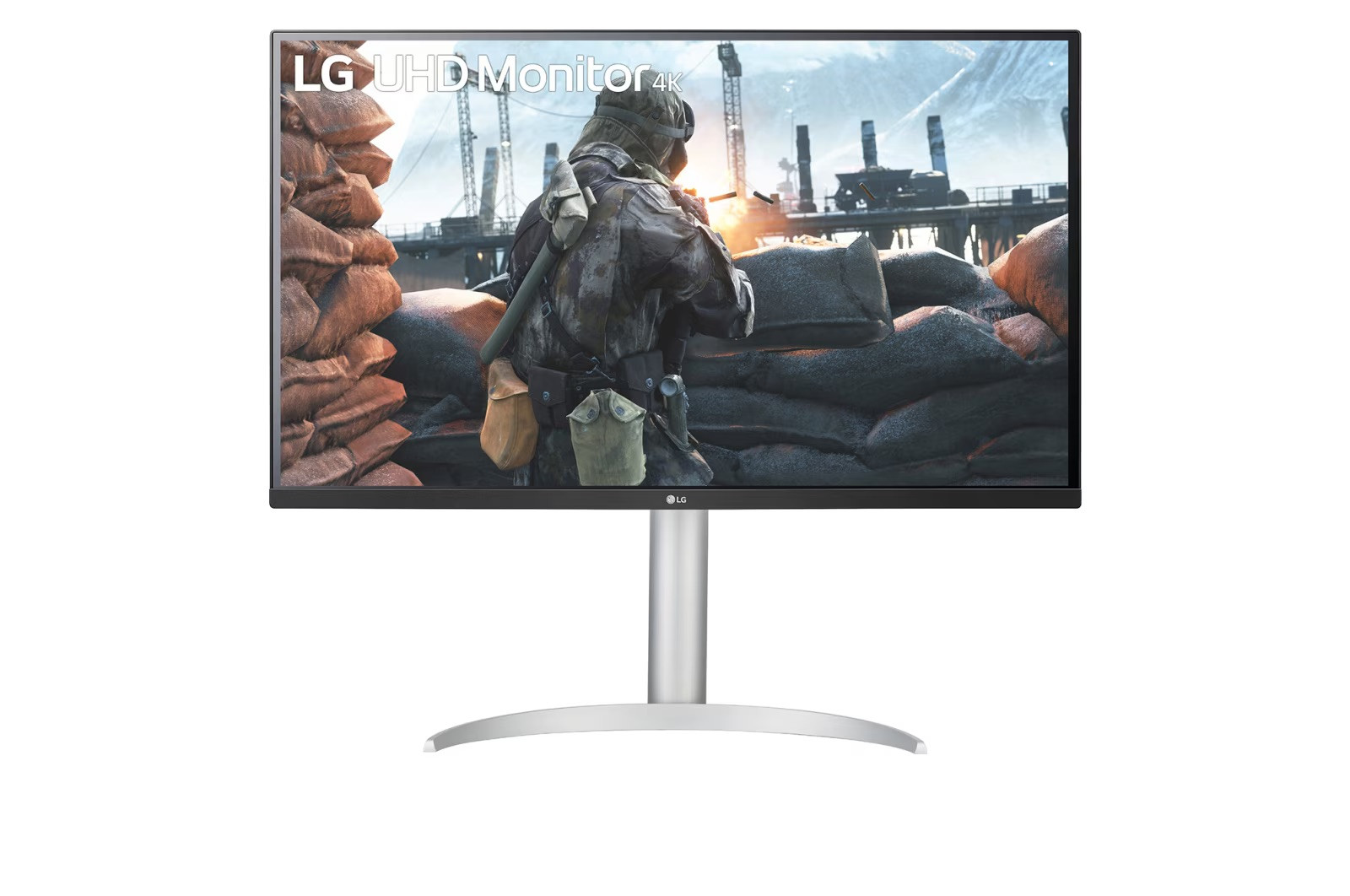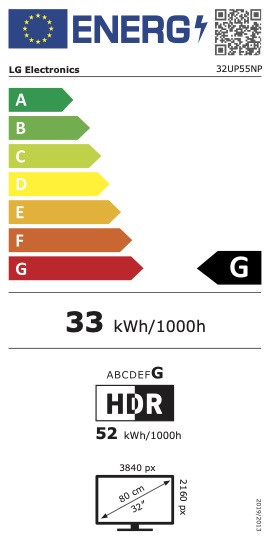







































£347.99*
- Resolution 3840 x 2160 4K UHD
- Diagonal 31.5"
- Panel type VA
- Refresh Rate 60Hz



Product information
The LG 32UP55NP-W is a 31.5-inch UHD 4K monitor that brings every detail of your content to life. Whether you want to enjoy stunning HDR content or immerse yourself in exciting gaming worlds, this monitor delivers the highest picture quality and impressive performance. With advanced technology such as HDR10, AMD FreeSync™ and versatile connectivity, it offers an outstanding viewing experience for creative professionals and gamers alike.
The technical data at a glance:
- Display size: 31.5 inch
- Resolution: UHD 4K (3,840 x 2,160)
- Colour gamut: 90% DCI-P3 (typ.)
- HDR technology: HDR10
- Gaming features: AMD FreeSync™, Game Mode, Dynamic Action Sync, Black Stabiliser
- Connectivity: USB Type-C™, DisplayPort 1.4, USB 3.0
- Ergonomics: Tiltable, height-adjustable, rotatable
- Charging: USB Type-C™ (up to 90 W)
HDR10: Detailed colours and contrasts
With HDR10 technology, the LG 32UP55NP-W supports a high dynamic range that makes it possible to display anextended colour spectrum and more brightness levels. This means your 4K content not only appears vivid, but also realistic. Especially for streaming services and other HDR content, you benefit from detailed and colour-intensive playback.
Ergonomic design for maximum comfort
The ergonomic stand of the monitor allows you to tilt, rotate and adjust the height of the screen to your liking. This means you can always position the monitor in the perfect position to work or play comfortably - even for long periods of time. This flexibility contributes to an ergonomic and pleasant working environment.
First-class connectivity with USB Type-C™
The USB Type-C™ port of the monitor not only ensures fast data transfer and 4K display, but also allows you to charge your devices simultaneously - with up to 90 W of power. Thanks to this versatile interface, your workspace stays tidy while you enjoy maximum efficiency and convenience.
OnScreen Control: Intuitive operation
The OnScreen Control software allows you to easily control the monitor via the user interface. Customise your display, split the screen for multitasking or make changes to the monitor settings - all with just a few clicks to make your working day more efficient.
Perfect gaming experiences with AMD FreeSync™ and MaxxAudio® speakers
The LG 32UP55NP-W is also aimed at gamers who value a smooth and immersive gaming experience. The AMD FreeSync™ technology prevents annoying stuttering and ensures fast, smooth movements in high-resolution games. Combined with Dynamic Action Sync and Black Stabiliser, you get optimal response speed and visibility, even in dark scenes. In addition, MaxxAudio® speakers are integrated to provide a rich and clear sound to make the gaming experience even more intense - without the need for external speakers.

The LG 32UP55NP-W thus offers an all-round impressive overall package for anyone who values high-resolution picture quality, ergonomic comfort and powerful gaming features.
Technical data
| Name | LG 32UP55NP-W 31.5" VA Monitor, 3840 x 2160 4K UHD, 60Hz, 4ms |
|---|---|
| Article number | 1000033187 |
| GTIN/EAN | 8806087975031 |
| Manufacturer SKU | 32UP55NP-W.AEU |
| EPREL ID | 1414067 |
| Model name | 32UP55NP-W |
| Brand | LG |
| Product Type | Monitor |
| Product Series | LG Business Series |
| Panel type | VA |
| Resolution | 3840 x 2160 4K UHD |
| Diagonal | 31.5" |
| Aspect Ratio | 16:9 |
| Viewing angle - Horizontal | 178° |
| Viewing angle - Vertical | 178° |
| Contrast Ratio | 3,000 :1 |
| Max. Brightness | 350 cd/m² |
| Response time | 4ms |
| Refresh Rate | 60Hz |
| Support - VESA | 100 x 100 |
| Inputs | 1x Displayport , 1x USB-C , 2x HDMI |
| Outputs | 1x 3,5mm Jack |
| Product width | 71.43 cm |
| Product height | 42 cm |
| Product depth | 4.57 cm |
| Weight | 8.4 kg |
| Colour | White |
| EEK Spectrum | A to G |
| Energy efficency class | G |
| Condition | New |
| Warranty | 36 Month |
| Warranty type | Swap service Service and support information |
Product safety
| Person responsible for the EU |
|---|
| LG Electronics Deutschland GmbH |
| Alfred-Herrhausen-Allee 3-5 |
| 65760 Eschborn |
| Germany |
| info@lge.de |



